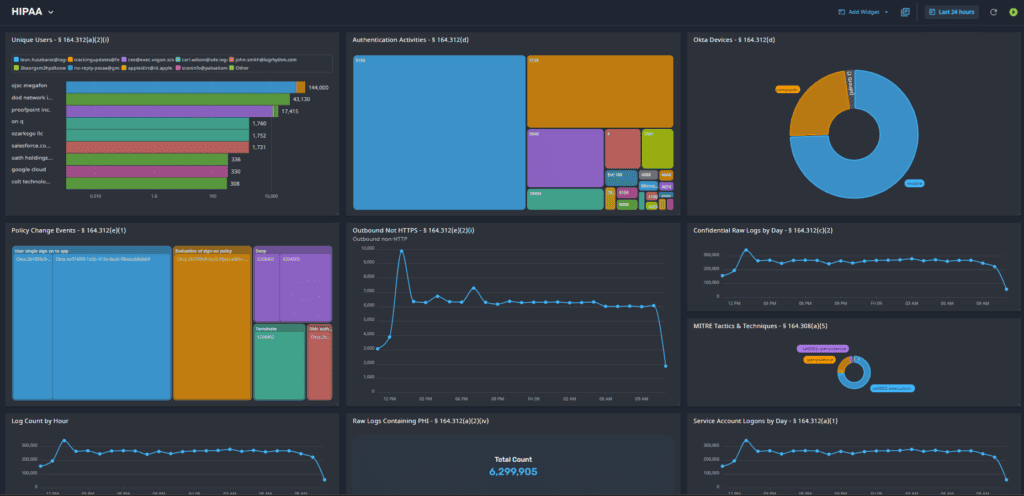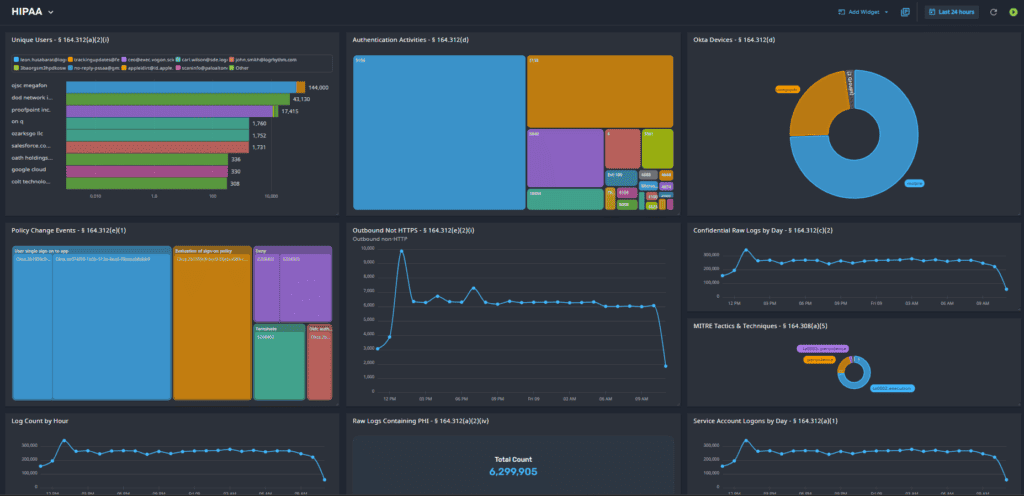
2024-3-12 21:38:48 Author: securityboulevard.com(查看原文) 阅读量:6 收藏
To say we live in an increasingly digital world would be quite an understatement. Modern technology is even intertwined deeply with the fabric of healthcare systems. As such, the specter of ransomware attacks looms larger than ever before.
Defined as malicious software that encrypts valuable data, holding it hostage until a ransom is paid, ransomware attacks represent a pervasive and escalating threat within the healthcare sector. With each passing year, the sophistication and frequency of these cyber assaults continue to rise, wreaking havoc on institutions and underscoring the critical importance of robust cybersecurity measures.
Small businesses operating within the healthcare industry face unique vulnerabilities. These leaner operations often lack the extensive resources and infrastructure of larger organizations. Thus, understanding the intricacies of ransomware attacks and learning how to prevent ransomware attacks in healthcare are imperative steps in safeguarding both sensitive patient information and organizational integrity.
The Problem: Healthcare Ransomware Attacks
Healthcare organizations have become prime targets for ransomware attacks in recent years, posing significant challenges to patient care and confidentiality. Studies show that the healthcare sector is the most targeted by these attacks, with reports citing over 76 percent of data breaches in the United States between 2015 and 2019 involving various healthcare service providers. Healthcare ransomware attacks have increasingly plagued the healthcare sector due to the sensitive nature of its data and the potential for large financial gains.
Overview of Ransomware Attacks on Healthcare
Ransomware attacks on healthcare institutions typically involve hackers infiltrating an organization’s network through various means, such as phishing emails, compromised websites, or exploiting vulnerabilities in software systems. Once inside, the attackers deploy ransomware to encrypt critical patient data, medical records, and administrative files, effectively rendering them inaccessible to the organization.
These attacks often result in disruptive downtime as healthcare providers are unable to access vital patient information. These interruptions to the flow of information lead to delays in medical procedures, appointment cancellations, and compromised patient care. Moreover, the attackers commonly demand hefty ransom payments in exchange for decryption keys, further exacerbating the financial burden on already strained budgets.
Impact of Healthcare Ransomware Attacks on Patient Care and Confidentiality
The consequences of healthcare ransomware attacks extend far beyond financial losses. Patient care is significantly impacted as healthcare providers struggle to retrieve essential medical records and deliver timely treatments. In emergency situations, delayed access to critical patient information can result in life-threatening scenarios.
Furthermore, the confidentiality of patient data is jeopardized when ransomware attackers gain unauthorized access to sensitive medical records. This breach of privacy not only violates patients’ trust but also exposes them to potential identity theft and fraud. According to recent studies, healthcare data breaches cost organizations an average of $9.23 million per incident, with the potential for even greater financial losses if ransom demands are met.
Beyond the ransom payments demanded by cybercriminals, healthcare organizations face substantial financial losses due to downtime, remediation efforts, legal fees, and regulatory fines. The Ponemon Institute’s Cost of a Data Breach Report 2020 confirms the average cost of a healthcare data breach is higher than in any other industry.
In addition to financial and operational disruptions, healthcare ransomware attacks erode public confidence in the ability of healthcare organizations to safeguard sensitive information. Patients may hesitate to disclose medical history or share personal data if they fear it could fall into the wrong hands.
Understanding Common Tactics of Ransomware Attacks on Healthcare Organizations
Healthcare organizations have become prime targets for ransomware attacks due to several factors, such as:
#1 The Value of Patient Data
Healthcare institutions store vast amounts of sensitive patient data, including medical records, billing information, and personal identifiers. This valuable data makes them lucrative targets for cybercriminals aiming to extort ransom payments.
#2 They Provide Critical Services
Hospitals and medical facilities rely heavily on digital systems to deliver patient care efficiently. Disrupting these systems through ransomware can directly impact patient treatment, emergency services, and operational continuity.
#3 There Are Too Often Vulnerabilities in IT Infrastructure
Many healthcare organizations struggle with outdated or inadequate cybersecurity measures, making them vulnerable to exploitation by cybercriminals. Legacy systems, unpatched software, and insufficient employee training contribute to their susceptibility to attacks.
The Impact on Patient Confidentiality
The repercussions of healthcare ransomware attacks extend far beyond financial losses. They jeopardize patient safety, compromise medical records, and erode public trust in healthcare institutions.
Patient confidentiality is a cornerstone of medical ethics and regulatory compliance. Breaches resulting from ransomware attacks expose sensitive information to unauthorized parties, risking identity theft, fraud, and reputational damage for both patients and healthcare providers.
Even after recovering from a ransomware attack, healthcare organizations may experience long-term consequences, such as decreased patient volume, loss of business partnerships, and increased insurance premiums. Rebuilding trust and mitigating reputational damage can be arduous tasks.
How to Prevent Ransomware Attacks in Healthcare With SIEM
Security information and event management (SIEM) systems serve as a critical component of cybersecurity infrastructure as they provide comprehensive visibility into an organization’s IT environment. These platforms aggregate, correlate, and analyze security data from various sources, including network devices, servers, applications, and endpoints. By centralizing security event logs and applying advanced analytics, SIEM solutions enable proactive threat detection, incident response, and regulatory compliance.
The Role of SIEM in Detecting and Mitigating Healthcare Ransomware Attacks
In the context of healthcare ransomware attacks, SIEM systems play a pivotal role in bolstering defense mechanisms and minimizing the impact of breaches.
Data Collection Across Disparate Sources
Through its centralized monitoring capabilities, SIEM gathers security-related information from various endpoints, network devices, and applications within healthcare systems. This comprehensive data aggregation allows for the detection of anomalous activities and potential ransomware threats across the entire infrastructure. In doing so, it enables proactive response measures to be implemented swiftly to mitigate risks and safeguard sensitive patient data.
Early Threat Detection
SIEM platforms continuously monitor network traffic, system logs, and user activity to identify suspicious patterns indicative of ransomware activity. Through real-time correlation and analysis of security events, SIEM alerts security teams to potential threats, enabling prompt investigation and response.
Incident Response
In a ransomware incident, SIEM facilitates rapid incident response by providing centralized visibility and seamless investigative workflows. Security teams can leverage insight from a SIEM to quarantine infected systems, isolate network segments, and initiate remediation procedures to contain the spread of ransomware and minimize data loss.
Forensic Analysis and Post-Incident Reporting
Following a ransomware attack, SIEM enables comprehensive forensic analysis to ascertain the scope of the breach, identify the entry point, and assess the extent of data compromise. By aggregating and correlating security logs, SIEM supports post-incident reporting for regulatory compliance and internal audits, aiding in the reconstruction of attack timelines and attribution.
The Main Benefits of Implementing SIEM in the Healthcare Sector
SIEM solutions offer significant benefits for both large and small healthcare organizations seeking to enhance their cybersecurity posture.
A SIEM Platform Provides Centralized Visibility
SIEM platforms provide healthcare organizations with centralized visibility into their environment, allowing them to monitor security events across diverse systems and endpoints from a single interface.
SIEM Offers Advanced Threat Detection
By automating the collection and analysis of security data into one place, SIEM enables healthcare organizations to achieve efficient threat detection within a single interface. This greatly reduces the burden on security teams to consolidate tools and processes, especially for those that have limited resources and who are already stretched thin.
SIEM Makes It Simple to Meet Regulatory Compliance
Compliance with healthcare regulations such as HIPAA requires robust security measures and comprehensive audit trails. SIEM solutions assist healthcare organizations in meeting regulatory requirements by facilitating log management, user activity monitoring, and incident reporting.
SIEM Delivers Both Scalability and Flexibility
Although some organizations require on-prem SIEM solutions, today’s modern SIEM platforms cater to the scalability and flexibility needs of healthcare organizations. A cloud-native SIEM platform offers SaaS deployment options, subscription-based pricing models, and customizable features tailored to your organization’s specific requirements.
Trust LogRhythm Axon for Defense Against Healthcare Ransomware Attacks
If you haven’t yet done so, we encourage you to prioritize cybersecurity measures. The rise of ransomware attacks in the healthcare sector underscores the urgent need for robust cybersecurity measures to protect patient care and confidentiality. Healthcare organizations must proactively defend against this evolving threat landscape to ensure the safety and integrity of patient data.
LogRhythm Axon is a cloud-native SIEM platform built for healthcare sector security teams that are stretched thin by immense amounts of data and an evolving threat landscape. Optimized for the analyst experience, LogRhythm Axon’s cloud-native delivery, powerful security analytics, intuitive workflow, and simplified incident response give your facility contextual insight into cyberthreats and help quickly secure the environment.

Next Steps
While it’s easy to feel overwhelmed with the growing threats against your facility, there’s quite a bit you can do to control your cybersecurity posture. This webinar, Ransomware Risks in Healthcare: Here’s What You Can Do, tells you everything you need to know. View it on-demand today and stay up to date with all things related to healthcare ransomware attacks. To see how LogRhythm Axon can help you secure your environment, request a custom demo.
The post Healthcare Ransomware Attacks: Understanding the Problem and How to Protect Your Organization appeared first on LogRhythm.
*** This is a Security Bloggers Network syndicated blog from LogRhythm authored by Delaney Adams. Read the original post at: https://logrhythm.com/blog/healthcare-ransomware-attacks/
如有侵权请联系:admin#unsafe.sh